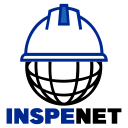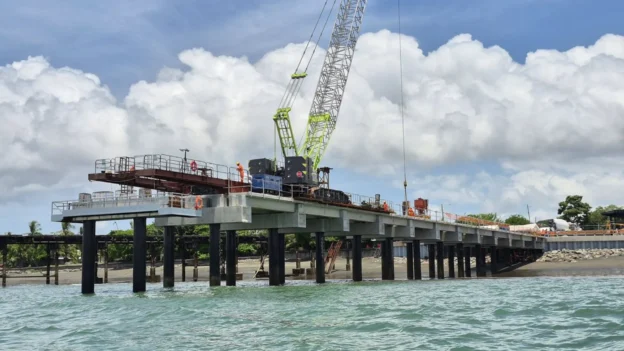The design and implementation of subsea pipelines represent a major challenge in offshore engineering for Oil & Gas projects. These systems, essential for the transportation of hydrocarbons to and from export and import terminals, require a multidisciplinary approach along with methodologies that ensure their technical, operational, and economic feasibility throughout their entire lifecycle.
An important stage in the design process is conceptual engineering, in which the most technically and economically viable alternatives for project development are identified. Building on this foundation, the project progresses to the basic, detailed, and construction engineering phases, where technical, operational, and safety aspects are addressed in greater depth, enabling a comprehensive definition of the system to be implemented.
Each phase is critical, as it establishes technical solutions, validates design criteria, and provides detailed planning for project execution. Every stage presents specific challenges that must be addressed holistically, considering not only the technical, financial, social, and environmental conditions of the marine environment, but also the long-term operational and maintenance implications that may arise from the decisions made during these phases.
Subsea pipeline projects require coordination across multiple disciplines, including civil engineering, piping, process, electrical, instrumentation and control, as well as oceanographic studies. This integration is essential not only to ensure technical consistency among the different specialties, but also to guarantee that decisions are aligned with the project’s operational objectives.
A key factor in design development is the characterization of the marine environment through geophysical surveys such as multibeam bathymetry, Sub-Bottom Profiler (SBP), and Side Scan Sonar (SSS). These surveys provide detailed information to designers, who often do not have direct access to the site, regarding seabed topography, subsoil stratigraphy, and the identification of potential natural or artificial hazards. This information becomes an essential tool for making informed and safe decisions during the design development process.
One of the challenging aspects in subsea pipeline installation is the onshore/offshore transition, known as the shore approach. This section requires an evaluation of both the technical construction feasibility, of different installation methods, and the environmental and social impact on sensitive coastal areas. The selection of the appropriate method must consider multiple factors such as the hydrodynamic and morphodynamic behavior of the shoreline, geotechnical soil characteristics, the presence of adverse marine conditions, proximity to urbanized or protected areas, and the access for heavy machinery. This process must be carried out in coordination with environmental authorities, local communities, and other social stakeholders to ensure the project’s success, sustainability, and acceptance by all parties involved.
Beyond design, installation, and initial commissioning, one of the greatest challenges in subsea pipeline systems is ensuring their integrity throughout their service life. To achieve this, it is necessary to incorporate, from the basic engineering phase, criteria that facilitate system monitoring, inspection, and preventive maintenance. Key aspects such as the selection of corrosion-resistant materials, the design of appropriate mechanical protections, the integration of continuous monitoring systems, as well as the planning of periodic inspections like Inline Inspection (ILI), must be considered from the early design stages to anticipate adverse operating conditions, ensure system reliability, and reduce costs associated with failures or corrective interventions.
A common limitation in projects is to develop each engineering phase as an isolated process, focused solely on the constraints and requirements of that specific stage. This approach limits the ability to anticipate future challenges and can result in technically valid solutions that are impractical to operate or costly in practice.
A key aspect, often underestimated, in engineering developments is the operational perspective of the system. It is common during the conceptual, basic, and detailed engineering phases to prioritize technical and design criteria without thoroughly considering how the pipeline will be operated once in service. This can lead to systems that, while technically viable, are difficult to operate, involve high logistical costs, maintenance complexities, or even risks of failure due to overlooking operational aspects.
Therefore, it is essential to incorporate a forward-looking perspective in all engineering phases, involving from the outset the operating personnel or companies experienced in managing similar systems to integrate lessons learned, expert judgments, and the know-how gained throughout the project development. Their input allows for a more realistic evaluation of solution alternatives, anticipation of complex operational scenarios, and estimation of the resources and costs required for each option.
To ensure success in the engineering development of subsea pipelines, the following recommended practices should be considered:
- Iterative review: Promote continuous review cycles among disciplines and phases to ensure consistency and avoid unforeseen issues.
- Early operational involvement: Include operations experts to evaluate the feasibility of solutions.
- Lifecycle analysis: Assess system operation and maintenance costs and requirements from the outset.
- Risk management: Apply methodologies such as HAZID and/or HAZOP, among others, to identify and mitigate risks from early phases.
- Simulation: Use advanced tools to model shoreline behavior, structural integrity, and response to extreme conditions.
Overcoming technical, environmental, and operational challenges in a demanding environment like the offshore Oil & Gas sector depends not only on regulatory compliance or the adoption of advanced technologies but also on the ability to effectively integrate knowledge from various disciplines with a forward-looking focus on system operation. Adopting a robust methodological approach that includes early participation from all key stakeholders—designers, builders, operators, and regulatory authorities, represents the best strategy to ensure safe, efficient, and sustainable marine engineering and Oil & Gas projects.
This article was developed by specialist Sergio Tovar Macías and published as part of the sixth edition of Inspenet Brief September 2025, dedicated to technical content from the energy and industrial sectors.


